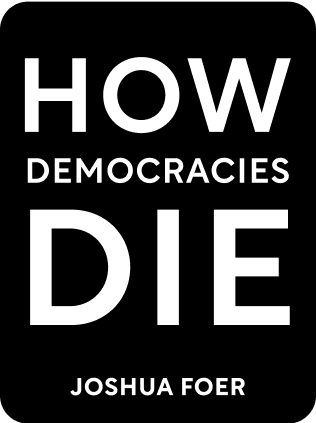

This article is an excerpt from the Shortform book guide to "How Democracies Die" by Steven Levitsky and Daniel Ziblatt. Shortform has the world's best summaries and analyses of books you should be reading.
Like this article? Sign up for a free trial here .
What is the process for dismantling democracy? How do authoritarians dismantle democracy to gain more power?
Dismantling democracy is something that most authoritarians do at some point. It involves removing democratic safeguards and centralizing power to one person, the authoritarian.
Read more about dismantling democracy and tools authoritarians use.
Authoritarian Tactics for Dismantling Democracy
So far, we’ve looked at how aspiring autocrats have come to power. In this chapter, we will look at the specific steps such figures take once they’re in power. As we’ll explore, authoritarians use three main tactics for dismantling democracy:
- Capturing the referees
- Sidelining their opponents
- Changing the rules of democratic competition
These changes may all technically be within the bounds of the law, but they all represent grave threats to a free democratic system.
Capturing the Referees
In a team sport, the role of the referee is to act in a neutral manner and never to selectively apply the rules to favor one side over the other. Politics also has referees—non-political, neutral actors who can sanction the behavior of politicians. Typically, they are judges, state prosecutors, police, and civil servants. Their role is to enforce laws and regulations in a neutral and disinterested manner.
To an aspiring authoritarian, however, these upholders of political norms represent a threat. Because such officials are usually career civil servants, and not party loyalists or cronies, they are unlikely to have particular allegiance to him. If the authoritarian is looking to increase his own power, these officials have the ability to stand in his way. Therefore, the goal of the authoritarian is to neutralize them.
There are several ways that this can be achieved. One tactic is to simply fire civil servants from key agencies and pack those agencies with loyalists. If any bureaucrats object, an aspiring dictator can use the power of impeachment to forcibly remove them from office.
Alternatively, they can wield the intelligence and espionage powers of the state to surveil and harass state officials who refuse to knuckle under. These tactics can be applied against officials in the tax and regulatory agencies, the law enforcement system, and even the courts themselves.
Sidelining Opponents
Once an authoritarian has captured the referees and ensured that there will be no meaningful checks on his power from within the government, he can turn his attention to his opponents —typically politicians from opposition parties, but also business leaders, media outlets, and journalists.
The previous step of capturing the referees plays a crucial role here. By stacking the courts, tax and regulatory authorities, law enforcement apparatus, and intelligence agencies with loyalists, the authoritarian can wield the power of the state to reward and protect his friends—and punish and intimidate his enemies.
There are several tactics authoritarian governments use to sideline potential opponents. These can include privileged access for pliant media outlets and the use of the legal and regulatory apparatus of the state to harass and intimidate opponents.
Dismantling Democracy by Changing the Rules
The final step in the authoritarian consolidation of power is to change the rules of democratic competition to neutralize opponents. The most effective tactics are gerrymandering and restricting who is eligible to vote.
Gerrymandering is the redrawing of the electoral map to lock in a political advantage for one party or faction. This is done through “cracking and packing”—diluting the other party’s voting power by spreading their voters across a large number of districts, or cramming the same voters into just a few districts. This makes it extremely difficult for the opposition party to ever win a majority of seats, even when they win a majority of votes.
A good example of a party successfully using extreme gerrymandering to its advantage is Viktor Orbán’s Fidesz Party in Hungary. After winning power in 2010, Fidesz members of parliament redrew the boundaries of parliamentary constituencies to give massively disproportionate power to the party’s base of rural voters. Because of the gerrymander, Fidesz holds two-thirds of the seats in parliament despite winning only 44 percent of the nationwide vote.

———End of Preview———
Like what you just read? Read the rest of the world's best book summary and analysis of Steven Levitsky and Daniel Ziblatt's "How Democracies Die" at Shortform .
Here's what you'll find in our full How Democracies Die summary :
- How shared norms are essential for preserving democracy
- Why the Trump presidency threatened those shared norms
- Why democracy goes beyond individual leaders and parties and must be a shared enterprise among committed individuals






